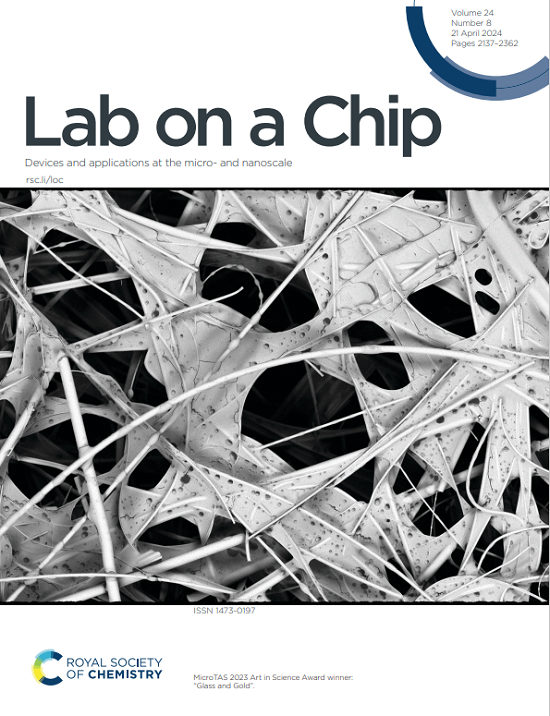On-chip particle levitation and micromanipulation using bulk acoustic waves
IF 5.4
2区 工程技术
Q1 BIOCHEMICAL RESEARCH METHODS
引用次数: 0
Abstract
Acoustofluidic technologies enable precise manipulation of microscale objects using travelling and standing sound waves in physiological fluids, offering exciting capabilities for biomedical and chemical applications. In particular, surface acoustic wave-based devices have shown great promise for on-chip micromanipulation, but their planar transducer configuration limits the usable workspace near the microchannel surface. Here, we present a novel acoustofluidic platform based on a digitally addressable array of piezoelectric micromachined ultrasound transducers (PMUTs) that generate bulk acoustic waves and acoustic traps within three-dimensional (3D) fluidic chambers. Through a combination of finite element modelling and experimental measurements, we quantify the acoustic field distribution and study acoustic trap formation dynamics. We demonstrate deterministic 3D levitation of particles in water at rest and under continuous flow by generating standing acoustic waves across the height of the chamber. Our results show that 30 µm polystyrene particles can be levitated to a pressure node generated 640 µm above the surface with less than 6% positional error. The system applies in-plane acoustic radiation forces as high as 90 pN to keep the particles in the trap under flow rates up to 40 µL/min. We leverage spatiotemporal modulation of the acoustic field for continuous planar transport of microparticle aggregates. PMUT arrays are microfabricated using conventional cleanroom techniques, thus can be readily integrated with compact fluidic systems. Our work lays the foundation for the development of reconfigurable and scalable acoustofluidic micromanipulation systems, with broad potential for lab-on-chip technologies.片上粒子悬浮与体声波微操作
声学流体技术能够利用生理流体中的行进和驻声波精确操纵微尺度物体,为生物医学和化学应用提供了令人兴奋的能力。特别是,基于表面声波的器件在片上微操作方面显示出巨大的前景,但它们的平面换能器配置限制了微通道表面附近的可用工作空间。在这里,我们提出了一种基于数字可寻址压电微机械超声换能器(PMUTs)阵列的新型声流控平台,该换能器在三维(3D)流体室中产生体声波和声阱。通过有限元模拟和实验测量相结合的方法,对声场分布进行了量化,研究了声圈闭的形成动力学。我们演示了确定的三维悬浮粒子在水中,在静止和连续流动下,通过产生驻声波跨越腔室的高度。结果表明,30µm的聚苯乙烯颗粒可以悬浮在距离表面640µm的压力节点上,位置误差小于6%。该系统施加高达90 pN的平面内声辐射力,使颗粒在流速高达40 μ L/min的情况下保持在捕集器中。我们利用声场的时空调制来实现微粒聚集体的连续平面传输。PMUT阵列使用传统的洁净室技术进行微制造,因此可以很容易地与紧凑的流体系统集成。我们的工作为可重构和可扩展的声流微操作系统的发展奠定了基础,具有广泛的芯片实验室技术潜力。
本文章由计算机程序翻译,如有差异,请以英文原文为准。
求助全文
约1分钟内获得全文
求助全文
来源期刊

Lab on a Chip
工程技术-化学综合
CiteScore
11.10
自引率
8.20%
发文量
434
审稿时长
2.6 months
期刊介绍:
Lab on a Chip is the premiere journal that publishes cutting-edge research in the field of miniaturization. By their very nature, microfluidic/nanofluidic/miniaturized systems are at the intersection of disciplines, spanning fundamental research to high-end application, which is reflected by the broad readership of the journal. Lab on a Chip publishes two types of papers on original research: full-length research papers and communications. Papers should demonstrate innovations, which can come from technical advancements or applications addressing pressing needs in globally important areas. The journal also publishes Comments, Reviews, and Perspectives.
 求助内容:
求助内容: 应助结果提醒方式:
应助结果提醒方式:


